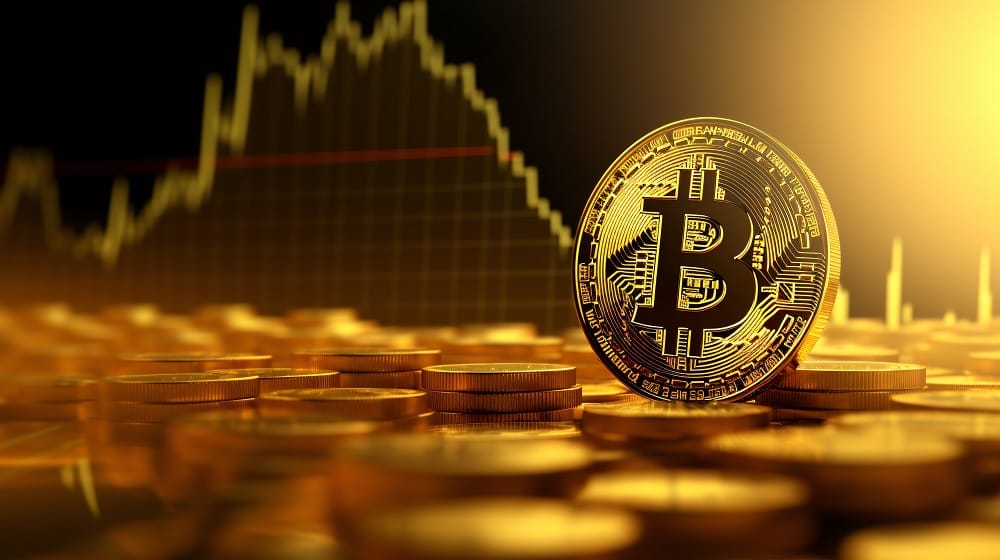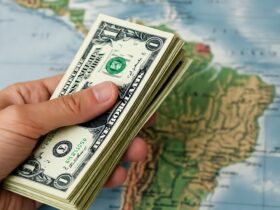The use of the physical dollar in Venezuela has clearly decreased this year.
Cashea moves the equivalent of 3.5% of Venezuela’s GDP monthly.
The inflation expected for Venezuela in 2025 and the collapse of the bolivar against the dollar have forced Venezuelans to adopt parallel solutions to safeguard their purchasing power. As part of the anti-inflationary formula that Venezuelans use, the stablecoin tether (USDT) and the fintech application Cashea stand out.
These are two mechanisms that, together, are being consolidated as a means of financing and protection against monetary deterioration.
So far this year, the official dollar of Venezuela has increased by 290%. This has made the minimum wage for workers the equivalent of 65 cents on the dollar. Of course, without counting on the benefits granted by the administration of Nicolás Maduro. The so-called “bonuses”, which allow the income to be raised to just over USD 100.
Furthermore, inflation has not stopped rising. Given the absence of official data from the Central Bank of Venezuela (BCV), whose last report was disclosed in November 2024, other organizations have made their own projections, as is the case of the now inoperative Venezuelan Finance Observatory (OVF).
In his last reportpublished in April 2025 (before they were apparently harassed), OVF analysts indicated that inflation closed at 18.4% in inter-monthly terms and by 172% in interannual terms.
Furthermore, the International Monetary Fund (IMF) esteem that inflation will close at 269.9% this year and at 682% in 2026. For their part, analysts from the Institute of Economic and Social Research (IIES) of the Andrés Bello Catholic University (UCAB) foresee that the inflationary spiral will reach 220% at the end of 2025.
The following graph shows the behavior of interannual inflation in Venezuela in one year. It can be seen how since January 2025 the indicator began to increase steadily until April.


The use of dollars in cash falls
This scenario, which is not new in Venezuela, since the country has already experienced episodes of hyperinflation in recent history. The situation initially led to a boom in cash dollars. Amid the dying economy of 2018, greenbacks began to flood the socioeconomic spectrum, giving the situation a break.
However, the use of the physical dollar in the South American country has fallen steadily since 2020. This is reflected in the fact that, during the first half of 2025, the use of cash currency decreased 37% compared to last year, according to data from the socioeconomic analysis firm Ecoanalítica.
This means that The use of bolivars as a means of payment once again took the lead. This, in part, is due to a series of government measures where they basically charge an extra tax to anyone who pays for a purchase with dollars.
The above has given rise to a greater presence of USDT, which stands out as an alternative to the traditional greenback, since its market value is linked to the US dollar. In the last year There has been increasing adoption of this stablecoin in Venezuela, developed by the company Tether Limited, as CriptoNoticias has been reporting.
This has been seen in businesses, which have begun to integrate payments at points of sale using USDT, an asset that circulates in peer-to-peer (P2P) markets operating in the country at prices higher than 300 bolivars per unit.. That is more than 50% above the official rate established by the BCV.
This integration has been carried out organically through Binance, as well as through applications and alliances between local companies and that exchange. This has allowed boost USDT adoption as a safe haven amid cash shortages and the loss of confidence in the national currency.


According to economist Daniel Arráez, “taking refuge in USDT and not having bolivars is a valid alternative, because their movements in the market with bolivars do not affect them.”
In comments to CriptoNoticias, the digital asset specialist clarifies that USDT “is not equal to a dollar,” since it is private money issued by a company. While the US dollar, per seis a sovereign currency.
Even so, he points out, the use of USDT in Venezuela allows “to better navigate inflation” and operate in international markets with less exposure to local devaluation.
A credit savior
In parallel, Cashea, Venezuela’s main credit and debt company, has introduced digital credit in an environment where traditional banking lost the capacity to finance consumption.
The application, under the “buy now, pay later” model, processes transactions equivalent to 3.5% of Venezuela’s monthly gross domestic product (GDP) ($8.57 billion), exceeding $300 million each month.
In addition, its presence reaches 40% of users with access to fintech services in Venezuela, facilitating the purchase of goods in installments and allowing the average consumer finances dollarized products with fractional payments in local or stable currency.
Arráez highlights that the appearance of Cashea “reduces the inflationary effect” by restoring a form of credit that national banks cannot sustain. Access to dollarized digital lines allows users to cushion the loss of purchasing power and stabilize their consumption in the face of exchange volatility, he explains.
Indeed, this model has encouraged informal arbitrage practices, where some users purchase goods with Cashea credit to resell them at parallel rates, which reflects the search for liquidity in a restricted economy.
The shopping sector in Venezuela was recently revolutionized, after Cashea announced a risk adjustment in the face of the exchange crisis and the rise of USDT, CriptoNoticias reported.
An economic defense mechanism
The USDT–Cashea binomial has thus become an economic defense mechanism in the midst of the forced rebolivarization of trade and growing inflation.
This duo, in effect, is anti-inflationary because, on the one hand, it allows value to be safeguarded and the increase in prices in Venezuela to be avoided, since there is 50% more purchasing power. And on the other hand, Cashea offers the possibility of buying on credit without interest, allowing you to purchase different types of products at current prices. and then paying them with money that, measured in bolivars, is worth less, as a result of the constant devaluation of that national currency.
Indeed, at a time when the bolivar is losing ground and bank credit remains limited, stablecoins and local fintech They are rebuilding savings, payment and digital consumption channels.
In a context where the IMF expects Venezuelan inflation to escalate progressively in 2026, financial digitalization emerges as the only functional way to maintain value and access to credit.
Technological dollarization, supported by assets like USDT and platforms like Cashea, thus redefines the way in which Venezuelans face the crisis. It is true that it does not replace the lost economic stability, but it does offer a practical alternative to inflation that continues to erode purchasing capacity. and that shows no signs of reversing in the short term.






Leave a Reply